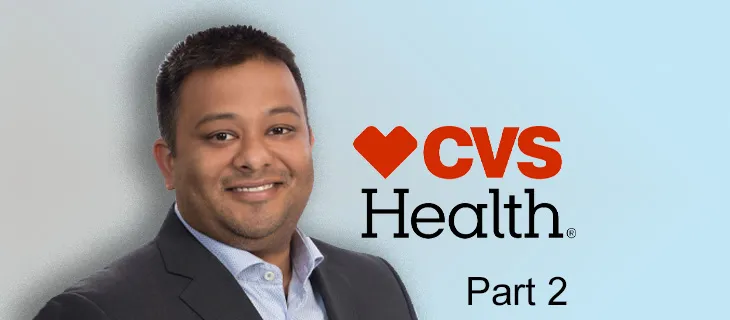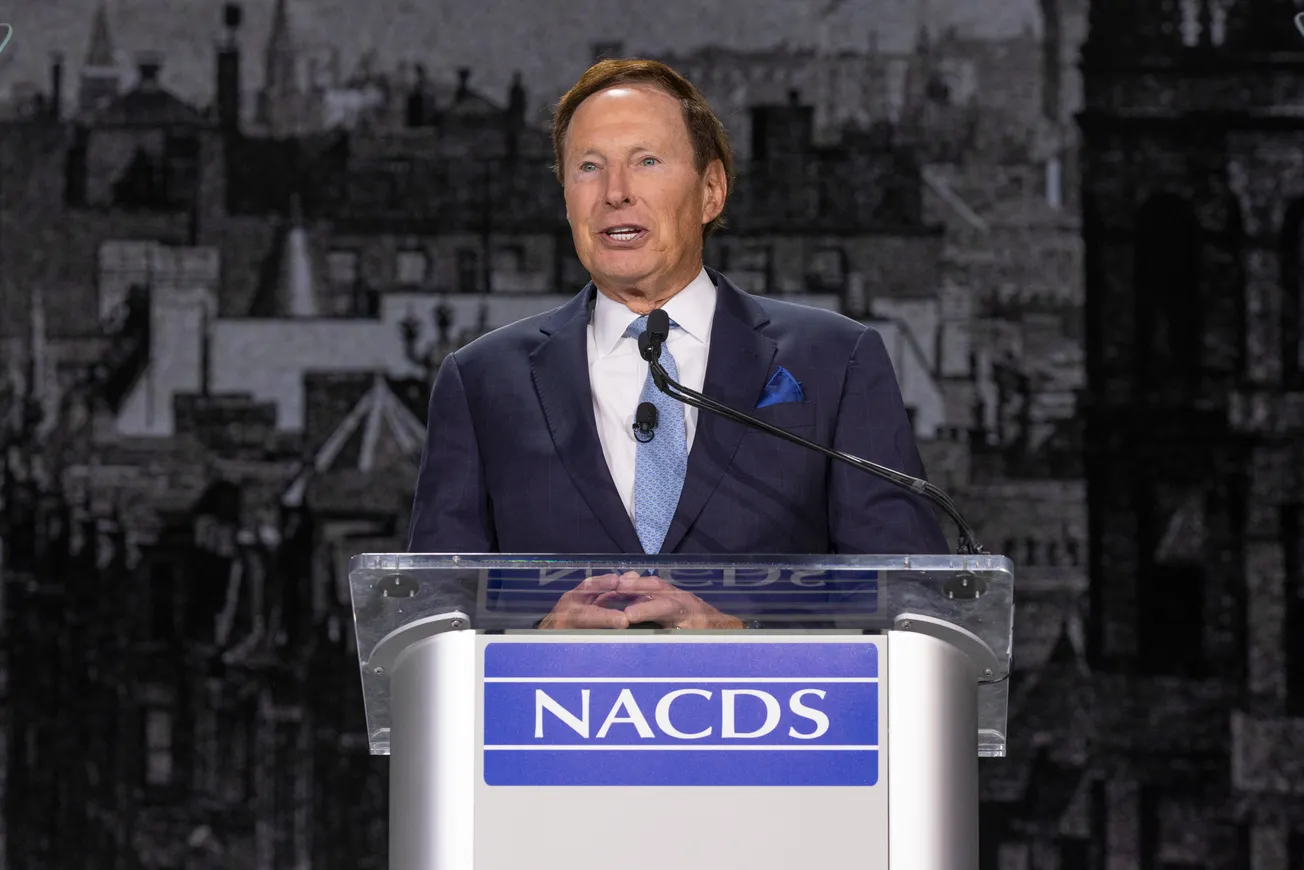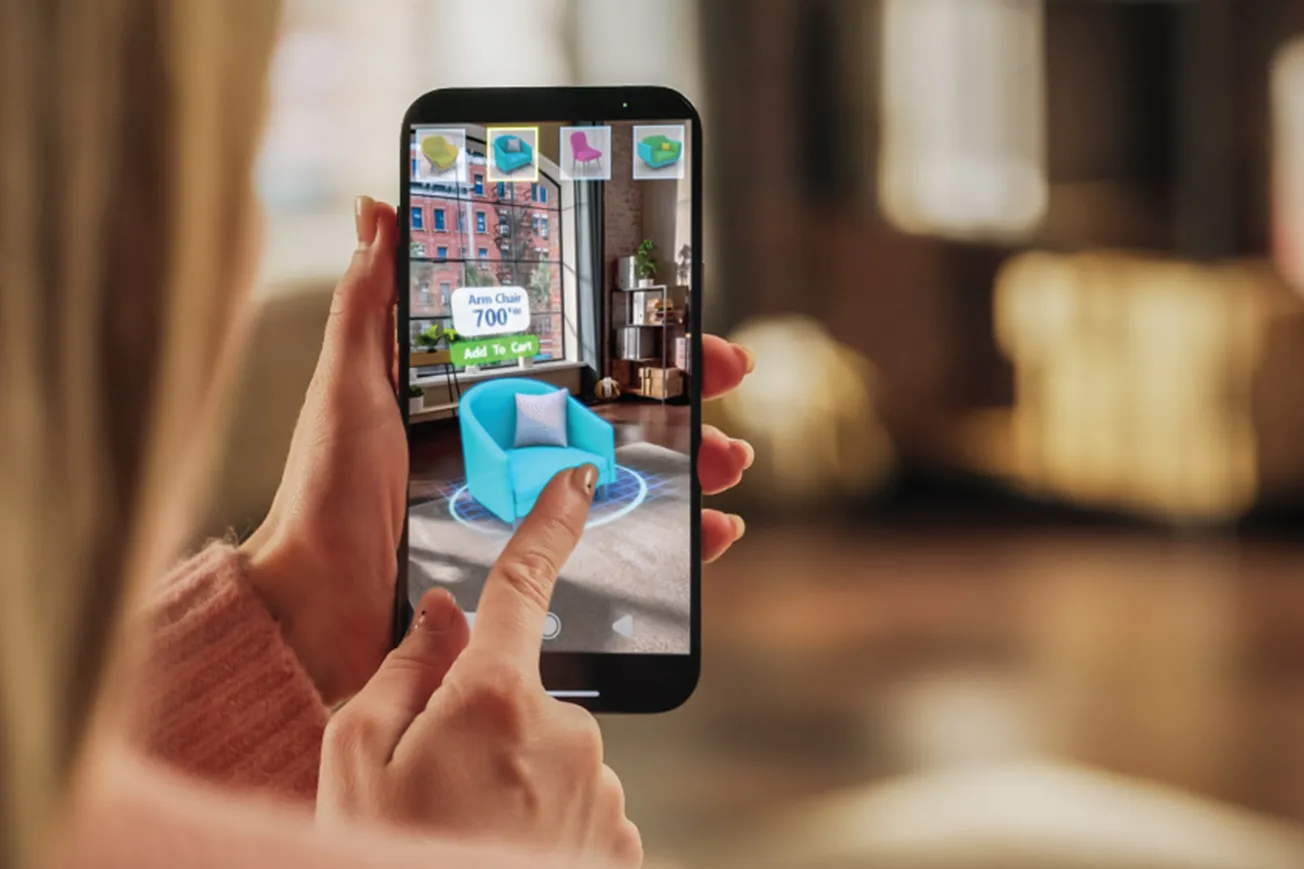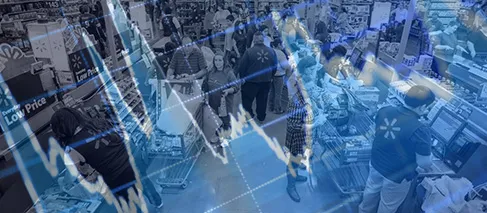Prem Shah, executive vice president and chief pharmacy officer of CVS Health and co-president of CVS Pharmacy, tells this week’s Video Forum about where pharmacy fits into the company’s health care model. In the conclusion of a two-part interview, Shah also discusses the impact of digital technology on pharmacy practice, how specialty medications are dealt with in the retail setting and the importance of health equity.
Transcript:
Chain Drug Review and Mass Market Retailers video forum, brought to you by The Emerson Group.
Jeffrey Woldt:
Hello, everyone. I’m Jeffrey Woldt, editor in chief of Chain Drug Review and Mass Market Retailers, welcome to our video forum. Today we’re delighted to bring you the second half of our conversation with Prem Shah, executive vice president and chief pharmacy officer at CVS Health and co-president of CVS Pharmacy. Maybe you can talk a little bit about the broader CVS ecosystem. Obviously, you’re involved in a lot of different aspects of healthcare. Where does pharmacy fit into that broader organization?
Prem Shah:
Well, let me start with first, CVS Pharmacy plays an absolute critical role at CVS Health. It serves as a contributor for our overall business, for our financial goals, but it’s also the brand ambassador to the company. We have millions of people that walk through our doors every day and we want to create value for our customers and our patients through innovative, connected ways to deepen our engagement with all of our consumers across all of our CVS Health assets. We partner with differentiated business lines to create product solutions, we optimize our fulfillment capabilities, but most importantly, as you think about that local door to healthcare, CVS plays that critical role for our own, kind of what I’d say is other businesses that we have in our company, but also for our other payers.
And the way we’re expanding that is really by focusing on our physical assets, as well as our digital assets. And we think that the digital connectivity in our pharmacies is critical to the future. I personally strongly believe that pharmacy should be a digital first approach, but not a digital only approach. What I mean by that is you should connect pharmacy digitally, but you should also have the local means of pharmacy in the communities which we serve. What that means is that the digital experience is going to improve the patient experience. It’s going to connect better with other parts of the healthcare industries like the providers. And we’ve seen this in other industries as well. If you think about the airline industry, for example, it wasn’t very long ago that you’d go and get a boarding pass from a machine before you went through the TSA pre-check line or through the security line.
Now, you look at your phone, you have your boarding pass on your phone, you go through that line and then you go and you patiently wait until the phone messages you when you’re ready. There’s no reason why we can’t bring those types of things to pharmacy to make it a much, much more convenient and better experience in terms of that interaction. The second piece is around when you think about our digital tools and how they’re critical, they also allow you to track the status of your prescription. So, think about things that get submitted for electronic health record, we know that the second they get submitted and sent to us like an eRx, we can inform that to a patient to inform them when that prescription is going to be ready. We give them the flexibility to change the timing of that prescription.
Again, more convenience for the member, but we can also take action. So, if you asked how does this all connect to our other businesses or to payers, we are still able to connect that interaction with an Aetna member or a Caremark member or one of our other payers to really drive what I’d say is cohesive approach to managing that patient’s care, making sure that it’s consumer driven, but also has our touch points in it. And I’d say we’re at the infancy of this journey around digitally engaged with our physical infrastructure and so our goal and one of my, what I’d say is key metrics that I look at for my team is how do we unleash the power of this digital integration to create more choice and convenience for patients, improve better healthcare outcomes for patients, and create more meaningful time for our pharmacists to have better interactions in the physical stores when they need it. So, this is absolutely key.
And I want to just say, digital is never going to replace the power of a pharmacist, it’s just going to help streamline it and make it better. And our approach to digital will enhance that interaction and experience with their pharmacist while keeping the convenience and taking all the bureaucracy out of pharmacy.
Jeffrey Woldt:
If the digital piece goes as you project it, will that mean less people coming into the store?
Prem Shah:
It’s absolutely not less people coming into the store, when they do come into our store though, they’ll be much more fully informed. Think about the transition of Starbucks. Half the people now today don’t even order inside of a Starbucks, they just walk in and grab their coffee. If you think about other industries, that’s where it’s at. So, this is not meant to get people not to come into our store, it’s actually the opposite. When they come into our store, we want them to have the absolute best experience, not have to ask someone a basic question when that question could be at their fingertips. We want to be able to have those interactions be much more meaningful with our pharmacists and our clinicians so that they’re able to answer their questions. But then the easier parts of pharmacy, for example, checking someone out or being able to inform them where their prescription is, we want to put all of that in the hands of the patient to make that much more seamless.
Jeffrey Woldt:
We’re talking about the stores. Maybe you could comment on how you see the rest of the store evolving in light of CVS’s emphasis on healthcare and also how the pharmacy team interacts with over the counter medications and perhaps some of the other categories that are sold in a CVS drugstore.
Prem Shah:
Yeah, Jeff, it’s a great question. First off, the rest of the store and the pharmacy team are one team. We work together every day to drive the outcomes of what our patients and consumers need. And so, our pharmacists walk outside of the pharmacy all the time to provide suggestions for over the counter medications or remedies that patients may need. They help them with, whether it’s an ankle brace or other things that they may need, so we’re very closely connected. As you think about our MinuteClinics that we have in a lot of our stores and our HealthHUBs, those are other areas in which we connect and provide services for patients. And we continue to really focus on, I’d say a few things. One is as we think about that interaction with the front of the store and the pharmacy, how do we continue to drive it to a better healthcare approach?
But first and foremost, how do we make it more convenient? Because we don’t want to just have another box and still have the same inconvenience of healthcare kind of in our store. So, we’re trying to think through how do we make it more convenient? How do we connect digitally our stores? How do we have the experiences more connected? A couple of real examples is, for example, if you left a doctor’s office in that digital example I gave you and you needed a prescription and you just had flu and you wanted something from the front store, we’re connecting our pharmacy digital assets with our front store digital assets so that when you come in, we can have all of that ready for you. So, just a bunch of things.
What I would say is connecting that consumer experience, but then also thinking about what other services can we provide through MinuteClinic and the HealthHUB where we know that we’re in the local communities where this care is needed and that we can leverage our stores to provide those services.
Jeffrey Woldt:
More broadly, how is the interaction these days between physicians and pharmacists?
Prem Shah:
The interaction between pharmacists and physicians still needs to get better. We need to continue to work and become one healthcare system, not separate healthcare systems. And so some of the ways that we’re doing that is continuing to connect our pipes into electronic health records so that we can transmit information into their EMR in a way that’s seamless. We can also capture information from them in ways that are seamless. And so this is absolutely something that I think our industry needs to get better at. For example, we field millions of calls from physicians and how do we take those calls and eliminate them? How do we transfer information back and forth?
And let me just recognize the industry because they’ve done a tremendous job with things like eRx. 10 years ago there was only about 25% eRx, which are electronic prescriptions sent from patients to pharmacies, we’re now close to 85% of prescriptions are done through eRx. So, we have become very efficient, but I still think there’s more to do here. There’s more to do around how we interact, there’s more to do on how we connect care, there’s more to do on even potentially providing services so that patient doesn’t have to wait for their physician, there’s something that they may be able to do in their local pharmacy in terms of that data and really providing that back.
So, I think the interactions continue to be positive and we get to continue to strive to make them better, to create the efficiencies across the system.
Jeffrey Woldt:
Are attitudes generational? Do you find that younger physicians are more open to interacting with their pharmacy partners than perhaps older doctors?
Prem Shah:
It’s not necessarily generational, I think it’s really process driven. And if you think about the processes that are in individual systems, whether you’re a physician or a pharmacist, they’ve been centered around our respective businesses. So, our pharmacy processes have been structured around pharmacy, physician practices are structured around physicians. We had to think about how to connect these processes so they’re one process because at the end of the day, both of us are interacting with a consumer or a patient and we had to think about how those interactions connect to them. And so, what I would say is it’s a continued push of the technology, the consumer first approach and how we connect our systems to be better.
Jeffrey Woldt:
You guys are a leader in specialty pharmacy. Maybe you can talk a little bit about how you’ve integrated specialty with your in-store pharmacy practice.
Prem Shah:
As you know, I led the specialty pharmacy business for the last 10 years before having the privilege to take this role. So, our specialty pharmacy business is connected to our retail business in a few ways. We have a little bit of work to do on a couple areas, I’ll highlight that as well. But the first way that it’s really connected is when we’re in specialty pharmacy, we realized that patients didn’t always want to wait at home for their medications to be delivered to their homes. So, think about these as very expensive medications that are being delivered through UPS or FedEx. They’re cold chain typically, so they’re cold medications and so they have to capture those medications and quickly put them in the refrigerator. So, we built a program called Specialty Connect.
Specialty Connect really just gives the member the option of either having that prescription delivered to their home or picked up in the store. When we started this, we didn’t realize how much of a consumer benefit it is to have that optionality for the patient. So, half the patients today actually pick up those prescriptions in the store versus at their home so that’s a tremendous convenience for members. The other thing it does is it allows us to connect for prescriptions that would sometimes end up in retail that had prior authorization or that were specialty medications, they would get stranded. They wouldn’t know how to get those medications. With the patients, the retail pharmacies may not have access to those medications.
We seamlessly send those prescriptions into our specialty pharmacy to make that experience much, much more seamless and a better interaction for the patient. And then offer them to have that medication picked up back at that store they dropped the prescription off or delivered to their home. So that’s the second. The third piece that we need to do more work on is really one digital experience. And so, right now we have a specialty pharmacy digital experience and we have a retail pharmacy digital experience, we’re looking at ways on how we’re going to evolve that and make that a very simple consumer approach to digital that will be consistent across both channels and that will also create more convenience and better outcomes for patients.
Jeffrey Woldt:
A final question for you, another area where CVS has been a leader is health equity. Maybe you can talk a little bit about how CVS Pharmacy and CVS Health are addressing those issues.
Prem Shah:
Health equity is absolutely something that’s important for us as a company. And if you think about across the country, we have over 9,000 pharmacy locations and our pharmacists are always nearby. They’re usually there during those more convenient hours, nights, weekends. And 85% of Americans live within 10 miles of a CVS pharmacy. And by adding the types of services I described before, we know that we can make healthcare more convenient and accessible. The second piece around health equity is we know we have pharmacists that are trusted and familiar. So, a lot of times in these communities, their pharmacist is the person that these folks stop by and seek counseling for or come into our stores for some of those OTC products we mentioned earlier.
And pharmacists are that most trusted healthcare which you need and they have the most frequent interaction with these patients. So, from a health equity perspective, I would say we do a few things. One is we were very deliberate when we launched the COVID vaccine and testing to make sure that we had all aspects of equity covered in where we chose our locations for testing, as well as for vaccinations across the country. And we continue to be that front regardless of if someone has insurance or not, for patients to come to ask questions for about their medication, if they have a sick child. And we want to continue to be a key, pivotal part of what I would say is the community by continuing to drive this.
And we see these patients more frequently than doctors, and as I think about ways to improve health equity, we had to continue to think about these services we provide in our stores, we had to continue to provide that access, that local community access that we can to all communities and then we had to continue to make sure that we’re doing the simple things, whether it’s translation or other things that there may be barriers to in the healthcare landscape, continue to break those barriers so that we provide more access and more affordable access to patients in all communities that we serve.
Jeffrey Woldt:
Correct me if I’m wrong and then I’ll stop after this question, I promise. You guys also are focused on helping consumers in general find the lowest cost option for medication. Am I right?
Prem Shah:
That’s right.
Jeffrey Woldt:
How is that initiative going?
Prem Shah:
It’s going great. It’s one of the ways that we believe that we can really help consumers. We know affordability is one of the biggest issues in all of healthcare and so, one of the ways that we do that is we identify patients that have high out-of-pocket cost and we can look at other alternative means to save those patients’ money. And we put that in our processes and we offer that to our patients as a means in which they can help reduce their out-of-pocket burdens for prescriptions. And it’s something that we really deem as really important in terms of creating value for patients and consumers across pharmacy.
Jeffrey Woldt:
Prem, you guys are doing some great things, and I thank you for your time today.
Prem Shah:
Thank you, Jeff.










